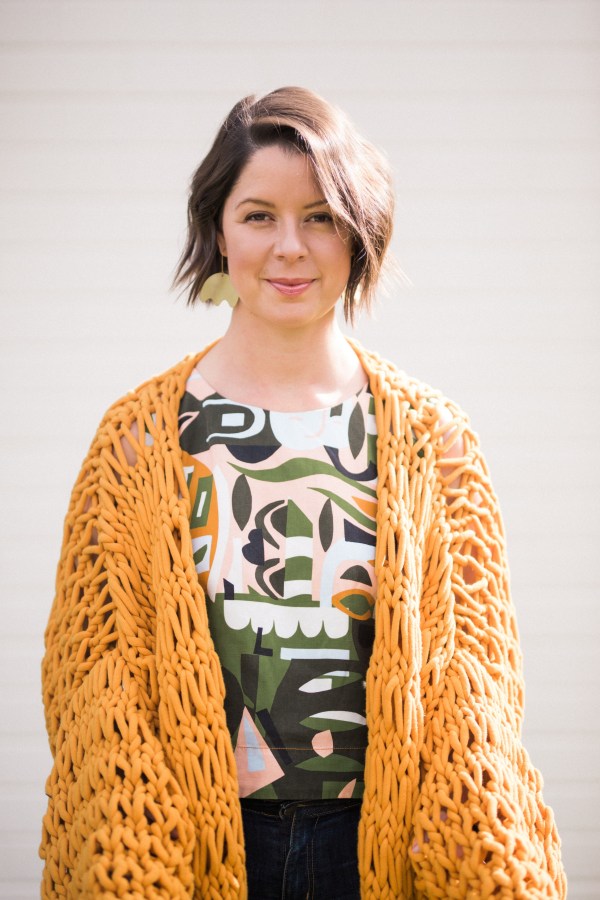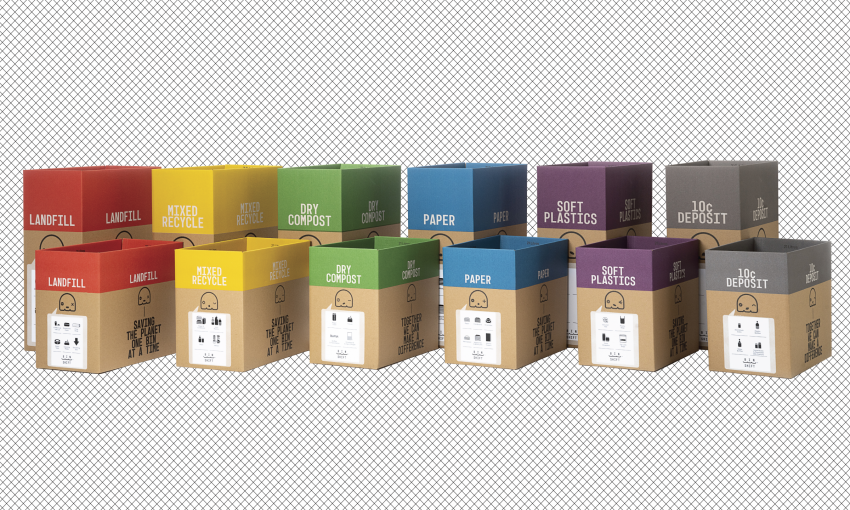South Australians sent more waste to landfill during the COVID-19 crisis than in pre-COVID times, but interior-designer-turned-trash-entrepreneur Carole-Lee Gordon has a fix: waste management system BIN SHIFT.
BIN SHIFT is a tidy, Adelaide-made waste diversion system
Since Carole-Lee Gordon unveiled waste separation system BIN SHIFT in January, she’s delivered 1400 multicoloured bins to households, schools and offices in South Australia, New South Wales and ACT.
“Australia is one of the most wasteful countries in the world,” Carole-Lee tells CityMag over email.
“Our disposable consumer behaviours are having a devastating effect on the environment.”
According to Clean Up Australia, the average Australian produces 540kg of household waste each year. That’s more than 10kg a week.
Making a bad situation worse, the COVID-19 pandemic saw South Australian households produce 10 per cent more landfill compared to this time last year, according to figures quoted by the South Australian government.
Minister for Environment and Water David Speirs recently said food waste was the biggest culprit, with almost half ending up in landfill when it could have been diverted as compost.
In a bid to curb this, the state government launched a new “Which Bin” campaign to encourage South Australians to recycle more efficiently. It builds on their 2019 ‘Vin’ advertising blast, starring a dad called Vin learning how to recycle.
The series of videos are as cringe as you’d expect from a government public service announcement (for example, episode four sees Vin attempting to achieve “bin ninja” status on his way to “recycling enlightenment”).
By comparison, Carole-Lee’s BIN SHIFT system is elegant and aesthetically driven, testament to her prior experience as a professional designer.

Carol-Lee glowing in a halo of sustainability
“Great aesthetics in design is extremely important and can transform an experience of a place or product,” she explains.
“Looking at the existing waste separation products on the market, I felt that there was a need for a well-designed and more sustainable range that incorporated fun and playful [elements] into the design to boost engagement, especially with children, as our first prototype was designed for primary school classrooms.
“Our philosophy is that bins are no longer smelly things in the corner of a room, they can stand front and centre in any interior space, look great and have a positive environmental impact.”
One $90 BIN SHIFT set includes five bright waste diversion bins. They’re each labelled mixed recycling, dry compost, paper, soft plastics and 10c deposit. One red bin, the outlier, is labelled landfill.
The bins are made from – you guessed it – recycled cardboard, and are manufactured locally.
A cute ghost character is printed on the front of each bin to explain what type of rubbish the bins accept. The vessels also have information on where the waste they’ve collected can be processed.
Both the government and Carole-Lee identify education as the biggest tool to curbing the amount of trash ending up in landfill. In BIN SHIFT’s six months of operation, Carole-Lee says she sees a lot of confusion about the South Australian recycling system.
“We absolutely love designing and locally manufacturing fun and engaging bins from recycled materials, however education is critical for SHIFTING waste disposal habits,” she says.
“We will continually work to produce more informative and engaging education resources around waste and recycling.”
The onus, then, is on waste producers like you and I to shift our bin habits together.




